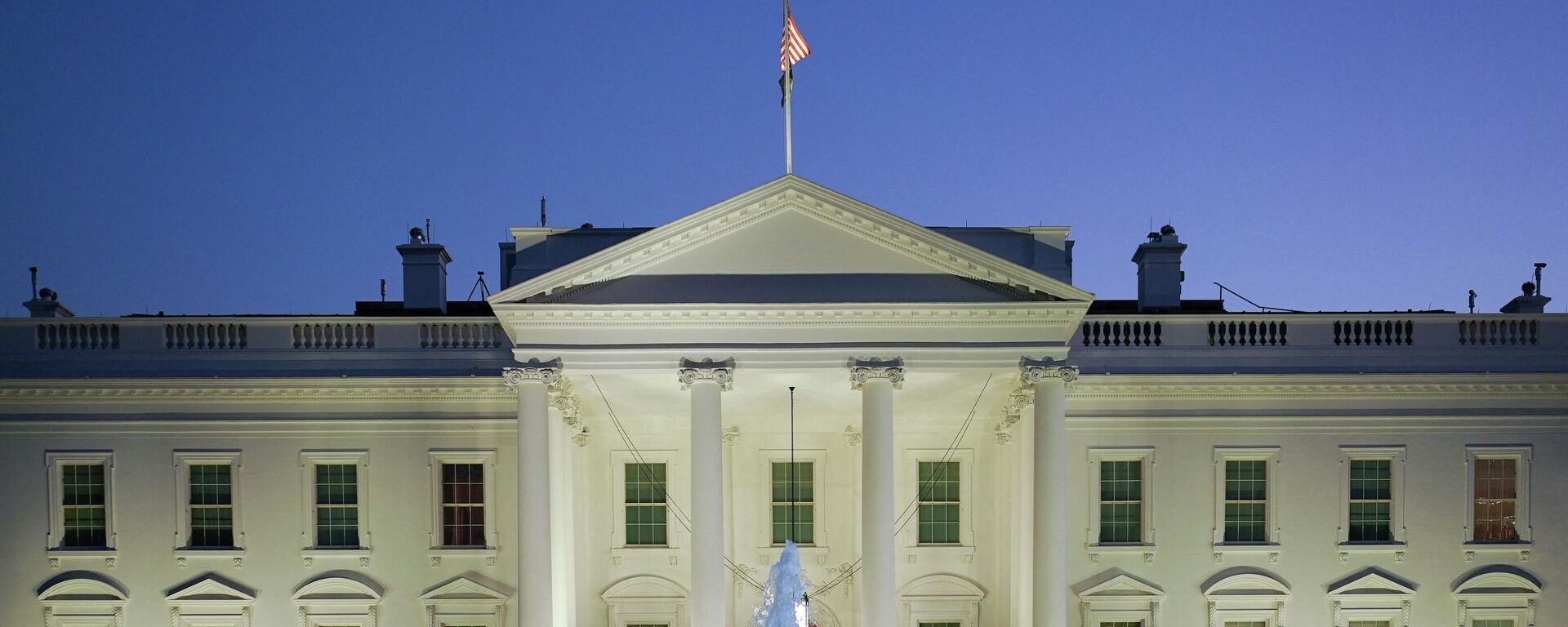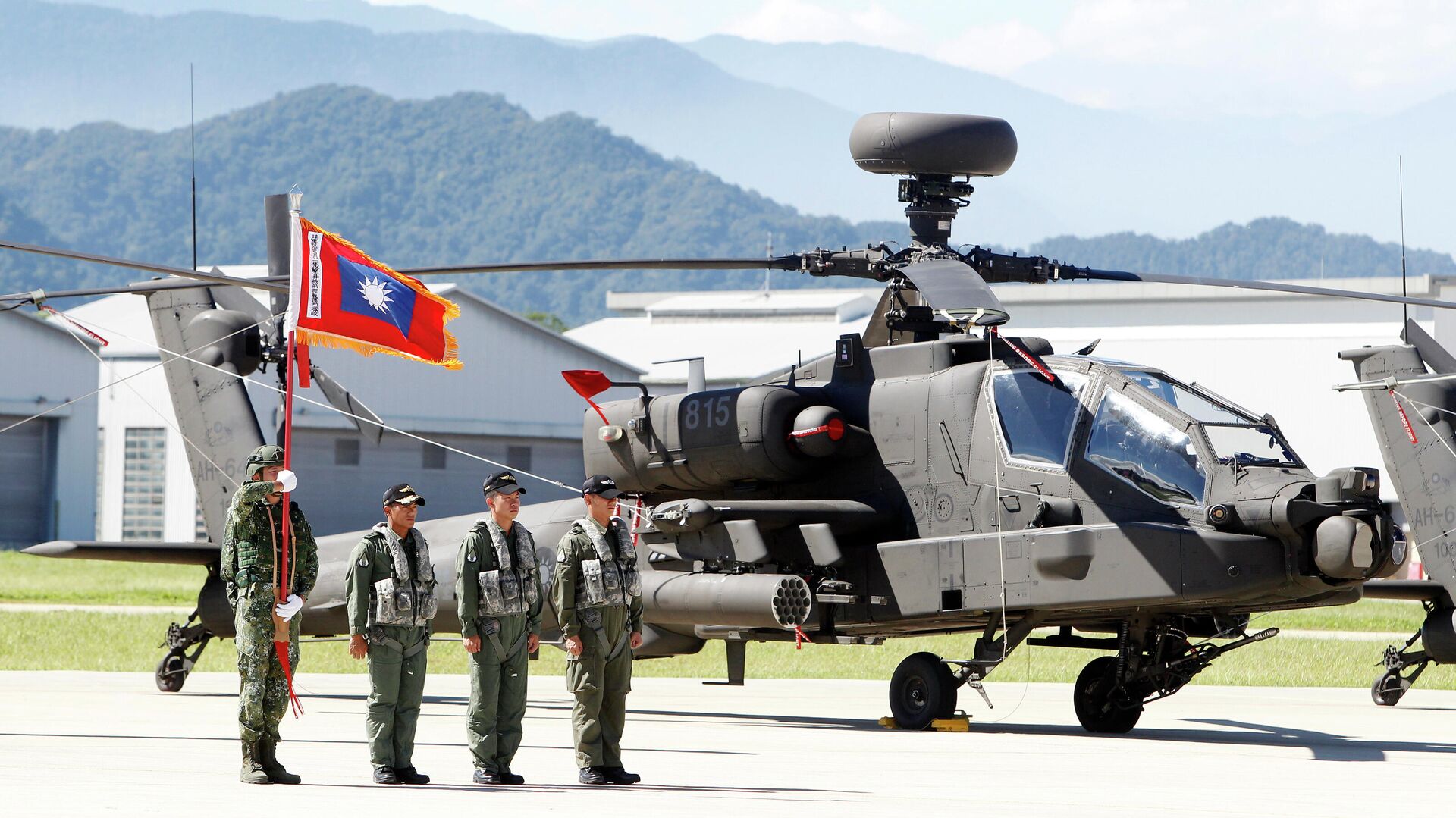https://sputnikglobe.com/20230223/us-reportedly-will-send-up-to-200-troops-to-taiwan-as-taipei-reveals-sending-500-to-train-in-us-1107746463.html
US Reportedly Will Send Up to 200 Troops to Taiwan as Taipei Reveals Sending 500 to Train in US
US Reportedly Will Send Up to 200 Troops to Taiwan as Taipei Reveals Sending 500 to Train in US
Sputnik International
The United States and Taiwan, which technically have no formal relations, are dramatically increasing their training cooperation at a time that tensions with... 23.02.2023, Sputnik International
2023-02-23T17:35+0000
2023-02-23T17:35+0000
2023-06-19T12:46+0000
world
china
us troops
training
taiwan
https://cdn1.img.sputnikglobe.com/img/07e6/02/15/1093224874_0:123:3204:1925_1920x0_80_0_0_6efc3dc630bb126ba5d461839b9a10aa.jpg
According to multiple reports in American media on Thursday, the US is preparing to send between 100 to 200 soldiers to Taiwan for training - a dramatic expansion of the small-but-controversial contingent of 30 US Marines stationed on the island.The People’s Republic of China, which sees Taiwan as a rebellious Chinese province being supported by foreign powers, has strongly protested the presence of any US troops on the island.For years, the US maintained it had no troops in Taiwan, but in 2019, the American Institute in Taiwan, which serves as the de facto US embassy, revealed that US Marines had been working security roles at the institute in Taipei since 2005. Then in late 2021, a series of internal Pentagon documents passed to US media revealed the presence of US troops in Taiwan since at least 2008, with more than 600 having visited the island since 2019. They also revealed that between September 2019 and August 2021, roughly 542 Taiwanese military personnel came to the US to participate in a total of 175 different training programs.That visit set off massive People’s Liberation Army (PLA) war drills around Taiwan and sent US-China relations into a tailspin from which they are still struggling to recover.Also on Thursday, reports in Taiwanese state media indicated the autonomous island would be sending 500 troops to the US. A joint combined arms battalion, including a mechanized infantry brigade and a tank brigade, will drill with the Michigan National Guard later this year, the report said.Since 2018, such exchanges have been funded by the Pentagon’s annual budget. That year, the Donald Trump administration adopted a new strategic posture of “great power competition” with Russia and China, identifying Taiwan as a key point of leverage over the PRC.The US has also dramatically stepped up its weapons sales to Taiwan, selling anti-air, anti-ship, and anti-surface strike missiles, as well as a variety of other equipment to the island. Washington has also encouraged Taipei to expand its national guard ranks, increase training periods, and adopt plans to wage asymmetric war in the event of a Chinese invasion of the island.Beijing has vowed to one day return Taiwan to the mainland’s jurisdiction under the "one country, two systems" principle, and indicated that the use of force would be a last resort to efforts by “Taiwan separatists” backed by foreign forces to declare independence.
https://sputnikglobe.com/20230218/white-house-to-hold-secret-talks-with-taiwans-delegation-next-week-media-reports-1107567033.html
https://sputnikglobe.com/20230221/beijing-urges-foreign-nations-to-cease-ukraine-today-taiwan-tomorrow-statements-1107646304.html
china
taiwan
Sputnik International
feedback@sputniknews.com
+74956456601
MIA „Rossiya Segodnya“
2023
News
en_EN
Sputnik International
feedback@sputniknews.com
+74956456601
MIA „Rossiya Segodnya“
Sputnik International
feedback@sputniknews.com
+74956456601
MIA „Rossiya Segodnya“
china, us troops, training, taiwan
china, us troops, training, taiwan
US Reportedly Will Send Up to 200 Troops to Taiwan as Taipei Reveals Sending 500 to Train in US
17:35 GMT 23.02.2023 (Updated: 12:46 GMT 19.06.2023) The United States and Taiwan, which technically have no formal relations, are dramatically increasing their training cooperation at a time that tensions with the Chinese mainland are at a new high.
According to multiple reports in American media on Thursday, the US is preparing to send between 100 to 200 soldiers to Taiwan for training - a dramatic expansion of the small-but-controversial contingent of 30 US Marines stationed on the island.
The People’s Republic of China, which sees Taiwan as a rebellious Chinese province being supported by foreign powers, has strongly protested the presence of any US troops on the island.
For years, the US maintained it had no troops in Taiwan, but in 2019, the American Institute in Taiwan, which serves as the de facto US embassy,
revealed that US Marines had been working security roles at the institute in Taipei since 2005. Then in late 2021, a series of internal Pentagon documents
passed to US media revealed the presence of US troops in Taiwan since at least 2008, with more than 600 having visited the island since 2019. They also revealed that between September 2019 and August 2021, roughly 542 Taiwanese military personnel came to the US to participate in a total of 175 different training programs.
An editorial published in the state-owned Global Times in response to the news warned the US was “playing with fire” by placing troops in Taiwan - a phrase repeated by Chinese President Xi Jinping this past July as then-US House Speaker Nancy Pelosi was preparing to fly to Taipei and meet with the pro-independence Taiwanese leadership.
That visit set off massive People’s Liberation Army (PLA) war drills around Taiwan and sent US-China relations into a tailspin from which they are still
struggling to recover.

18 February 2023, 07:11 GMT
Also on Thursday, reports in Taiwanese state media indicated the autonomous island would be sending 500 troops to the US. A joint combined arms battalion, including a mechanized infantry brigade and a tank brigade, will drill with the Michigan National Guard later this year, the report said.
“This marks the first time troops at battalion level, typically consisting of around 500 soldiers, will travel to the US for training – rather than platoon (25-60 troops) or company (80-150) level as in the past,” the report said.
Since 2018, such exchanges have been funded by the Pentagon’s annual budget. That year, the Donald Trump administration adopted
a new strategic posture of “great power competition” with Russia and China, identifying Taiwan as a key point of leverage over the PRC.

21 February 2023, 05:18 GMT
“Usually, plans like this would remain hush-hush … to prevent drawing the ire of the Chinese communists,” a Taiwanese military source anonymously told Chinese media on Thursday. “But with US-Taiwan relations becoming more solid and US-China rivalry intensifying, sometimes exposure of these activities is done intentionally to show the close cooperation and partnership between the US and Taiwan.”
The US has also dramatically
stepped up its weapons sales to Taiwan, selling anti-air, anti-ship, and anti-surface strike missiles, as well as a variety of other equipment to the island. Washington has also encouraged Taipei to expand its national guard ranks, increase training periods, and adopt plans to wage asymmetric war in the event of a Chinese invasion of the island.
Beijing has vowed to one day return Taiwan to the mainland’s jurisdiction under the "one country, two systems" principle, and indicated that the use of force would be a last resort to efforts by “Taiwan separatists” backed by foreign forces to declare independence.




